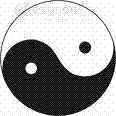| 话题中的页数: < [1 2 3 4 5 6] > |
对《专利文献的英汉翻译》一书中一些例句的商榷 论题张贴者: nigerose
|
|---|
ysun 
美国
Local time: 04:11
English英语译成Chinese汉语
+ ...
这一段说的 "Incorporation by reference" 并非是指引用别人的专利,而是指引用发明人或其法定代表或代理人先前申请的专利。 毫无疑问,自己先前的发明当然可以“作为本发明的一部分”。但若声称把别人的专利“作为本发明的一部分”,恐怕就会被人指控侵权。
| | | |
nigerose 
中国大陆
Local time: 18:11
Chinese汉语译成English英语
+ ...
主题发起人
ysun wrote:
这一段说的 "Incorporation by reference" 并非是指引用 别人的专利,而是指引用发明人或其法定代表或代理人先前申请的专利。 毫无疑问,自己先前的发明当然可以“作为本发明的一部分”。但若声称把 别人的专利“作为 本发明的一部分”,恐怕就会被人指控侵权。
原文表达是不够严谨,但“专利”一词在中文中也是多义词。
“专利是专利法中最基本的概念。社会上对它的认识一般有三种含义:一是指专利权;二是指受到专利权保护的发明创造;三是指专利文献。例如:我有三项专利,就是指有三项专利权;这项产品包括三项专利,就是指这项产品使用了三项受到专利权保护的发明创造(专利技术或外观设计);我要去查专利,就是指去查阅专利文献。专利法中所说的专利主要是指专利权。 ”
http://zhidao.baidu.com/question/13176270.html?fr=qrl
原文的意思,应该是“把别人的专利说明书内容纳入本发明说明书,作为本发明说明书内容的一部分”。
| | | |
wherestip 
美国
Local time: 04:11
Chinese汉语译成English英语
+ ...
| 并非拿别人的东西 "作为本发明的一部分" | May 30, 2009 |
ysun wrote:
这一段说的 "Incorporation by reference" 并非是指引用 别人的专利,而是指引用发明人或其法定代表或代理人先前申请的专利。 毫无疑问,自己先前的发明当然可以“作为本发明的一部分”。但若声称把 别人的专利“作为 本发明的一部分”,恐怕就会被人指控侵权。
我同意 Yueyin 的解释. Patent claim 肯定是要自己的原创. 用别人的专利综合到自己的 claim 里面是绝对不可能的. 顶多是提一下其它的 U.S patents 作为 prior art or background 之类的.
所以这样翻译是不准确的. 如果笔者是照猫画虎地用这个短语就是理解错了.
http://en.wikipedia.org/wiki/Claim_(patent)
Jepson claim
In United States patent law, a Jepson claim is a method or product claim where one or more limitations are specifically identified as a point of novelty, distinguishable over at least the contents of the preamble. They may read for instance "A system for storing information having (...) wherein the improvement comprises:". This claim’s name is based on a case, Ex parte Jepson, decided in 1917.
In a crowded art, a Jepson claim can be useful in calling the Examiner's attention to a point of novelty of an invention without requiring the Applicant to present arguments and possibly amendments to communicate the point of novelty to the Examiner. Such arguments and amendments can be damaging in future litigation, for example as in Festo.
On the other hand, the claim style plainly and broadly admits that that subject matter described in the preamble is prior art, thereby facilitating the examiner's (or an accused infringer's) arguments that the improvement is obvious in light of the admitted prior art, as per 35 U.S.C. § 103(a). Prosecutors and applicants are hesitant to admit anything as prior art for this reason, and so this claim style is seldom used in modern practice.
[Edited at 2009-05-30 13:32 GMT]
| | | |
wherestip 
美国
Local time: 04:11
Chinese汉语译成English英语
+ ...
| Incorporation by reference | May 30, 2009 |
http://www.answers.com/topic/incorporation-by-reference
This entry contains information applicable to United States law only.
The method of making one document of any kind become a part of another separate document by alluding to the former in the latter and declaring that the former shall be taken and considered as a part of the latter the same as if it were completely set out therein.
It is common drafting practice to incorporate by reference an existing writing into a pleading, contract, or other legal document in order to save space. The incorporating document, rather than copying the exact words of the existing document, describes it, and a photocopy is often attached to the incorporating document. This standard practice, however, encounters difficulty with the requirements prescribed by law for a will. If the will is a holograph — a document disposing of property that is written with one's own hand and not witnessed — the attachment might not be in the handwriting of the deceased and, therefore, invalid. If the will is formal, an attachment might violate the requirement that the testator (one who makes a will) or the witnesses subscribe (sign at the end of the will) the attachment. If subscription is not required, the incorporated document raises the question whether the testator has declared it to be a part of the will if it was not present at the time the will was signed.
It's a legal term that happens to be applicable in patent law also.
| | |
|
|
|
wherestip 
美国
Local time: 04:11
Chinese汉语译成English英语
+ ...
| 一般是没人自己往火坑里跳的 | May 30, 2009 |
| | | |
ysun 
美国
Local time: 04:11
English英语译成Chinese汉语
+ ...
nigerose wrote:
原文的意思,应该是“把别人的专利说明书内容纳入本发明说明书,作为本发明说明书内容的一部分”。
原文的意思也许就是你说的意思,但措词很不严谨,于是就成了“该文以引用的方式插入本文作为本发明的一部分”。 所以我一开始就说:“估计这句话是按照 "incorporated herein by reference” 照猫画虎画出来的”。 可以说,该作者不但是照猫画虎,而且是画蛇添足。“作为本发明的一部分” 就是他添的“足”。 专利是法律文件,若措词不严谨就很可能因此吃苦头。从 Steve 引述的那篇文章可见,那场官司的成败就在于 "incorporated herein by reference” 这句话。 所以,我们翻译专利时也绝不能掉以轻心,不能以为这只不过是一句套话,无关重要。
| | | |
ysun 
美国
Local time: 04:11
English英语译成Chinese汉语
+ ...
| Incorporate with care | May 30, 2009 |
Steve,
Thanks for the link. It’s a very good article. It tells us that great care must be taken when drafting or translating a patent application. I also noticed the following from the article:
“Translation costs can be a surprisingly large portion of the costs to extend patent protection to jurisdictions outside the United States.”
从中可以看出,用户为专利翻译付出的价码不低。这也从另一方面验证了国内某官方专利代理机构的雇员私下透露的消息,即他们按每小时200美元向外商收费(当然他们付给“翻译民工”的也许只是60~70元RMB/1,000 word)。
以前曾有人说,“不花脑袋的翻译就是专利申请书的翻译,难怪这种翻译的价码最贱”。
http://www.proz.com/post/956330#956330
从我们讨论的这个例子可以看出,“不花脑袋的翻译”就可能把 "incorporated herein by reference” 译成 “该文以引用的方式插入本文作为本发明的一部分”。 某些专利说明书就是因为写得滥或译得滥而得不到批准或最终吃上官司。现实中有许多这样的案例。
[Edited at 2009-05-31 06:46 GMT]
| | | |
nigerose 
中国大陆
Local time: 18:11
Chinese汉语译成English英语
+ ...
主题发起人
专利是科技与法律的结合,专利代理工作就是使科技成果权利化,而专利翻译工作既涉及科技翻译,也涉及法律翻译。
专利代理和专利翻译本来属高端的知识服务业,不知道为何在国内却得到民工化的待遇。
这可能是值得经济学家研究的课题。
| | |
|
|
|
ysun 
美国
Local time: 04:11
English英语译成Chinese汉语
+ ...
估计最终用户付给美国专利事务所的翻译费也是200美元/小时左右。 在美国,专利翻译的大部分利润同样也是被专利事务所和翻译公司拿去,只不过他们中有些人不如中国的“黄世仁”或黑煤窑老板那么贪婪而已。 这就是为什么我们在这里还有点生存空间。
其实“民工化待遇”的问题用不着什么经济学家去研究。问题就在于廉价劳动力过剩。我给美国某翻译社翻了几篇中国专利(中译英)之后,那 PM 又想要我做英译中,但他只愿出比我中译英价格的一半还低的价钱,还要我别感到 offensive。被我断然拒绝后,他说,其实他们主要是需要我做中译英。我告诉他,谢谢,但我不一定 available!他之所以敢如此大幅度地压价,可能就是因为他觉得做英译中的廉价翻译遍地都是。
[Edited at 2009-05-31 22:07 GMT]
| | | |
rhz820319
中国大陆
Local time: 18:11
English英语译成Chinese汉语
+ ...
| 实施需要取得前一发明专利权人的许可 | May 31, 2009 |
根据中国法律的规定
第五十条 一项取得专利权的发明或者实用新型比前已经取得专利权的发明或者实用新型具有显著经济意义的重大技术进步,其实施又有赖于前一发明或者实用新型的实施的,国务院专利行政部门根据后一专利权人的申请,可以给予实施前一发明或者实用新型的强制许可。
没有取得前一发明专利权人许可,擅自实施的,应该属于侵权;但仅在本专利中引用,而不实施的话,似乎不构成侵权:该法规定,实施是依赖于前一发明的,但后一发明已属于“一项取得专利权的发明”。
[修改时间: 2009-05-31 09:58 GMT]
| | | |
nigerose 
中国大陆
Local time: 18:11
Chinese汉语译成English英语
+ ...
主题发起人
rhz820319 wrote:
根据中国法律的规定
第五十条 一项取得专利权的发明或者实用新型比前已经取得专利权的发明或者实用新型具有显著经济意义的重大技术进步,其实施又有赖于前一发明或者实用新型的实施的,国务院专利行政部门根据后一专利权人的申请,可以给予实施前一发明或者实用新型的强制许可。
没有取得前一发明专利权人许可,擅自实施的,应该属于侵权;但仅在本专利中引用,而不实施的话,似乎不构成侵权:该法规定,实施是依赖于前一发明的,但后一发明已属于“一项取得专利权的发明”。
[修改时间: 2009-05-31 09:58 GMT]
不是一回事。
| | | |
rhz820319
中国大陆
Local time: 18:11
English英语译成Chinese汉语
+ ...
nigerose wrote:
rhz820319 wrote:
根据中国法律的规定
第五十条 一项取得专利权的发明或者实用新型比前已经取得专利权的发明或者实用新型具有显著经济意义的重大技术进步,其实施又有赖于前一发明或者实用新型的实施的,国务院专利行政部门根据后一专利权人的申请,可以给予实施前一发明或者实用新型的强制许可。
没有取得前一发明专利权人许可,擅自实施的,应该属于侵权;但仅在本专利中引用,而不实施的话,似乎不构成侵权:该法规定,实施是依赖于前一发明的,但后一发明已属于“一项取得专利权的发明”。
[修改时间: 2009-05-31 09:58 GMT]
不是一回事。
引用但不作为权利请求项吧;我认为,不作为权项内容,应该就不侵权。prior art, background art 说明是本发明专利书的一部分,但并不可能说是权项的一部分,没哪位敢那么明目张胆的。
| | |
|
|
|
Ethan Tian 
中国大陆
Local time: 18:11
Chinese汉语译成English英语
+ ...
此贴技术含量颇高,能从中学习到不少东西呢,受教了.谢谢大家.
| | | |
nigerose 
中国大陆
Local time: 18:11
Chinese汉语译成English英语
+ ...
主题发起人
rhz820319 wrote:
引用但不作为权利请求项吧;我认为,不作为权项内容,应该就不侵权。prior art, background art 说明是本发明专利书的一部分,但并不可能说是权项的一部分,没哪位敢那么明目张胆的。
说也没用,自己的专利权以自己的权利要求书为准。
| | | |
ysun 
美国
Local time: 04:11
English英语译成Chinese汉语
+ ...
| herein 不是指 "in the present invention” | Jun 1, 2009 |
“该文以引用的方式插入本文作为本发明的一部分”错就错在“作为本发明的一部分”。本来,“该文以引用的方式插入本文”就可以了。 添上“作为本发明的一部分”就成了画蛇添足。
“incorporated herein by reference” 就相当于 "incorporated in the present application by reference”,而不是 "incorporated in the present invention by reference”。如果按照字面意思把 “该文以引用的方式插入本文作为本发明的一部分” 译成 "which is incorporated herein by reference as a part of the present invention”,那就有可能带来麻烦。
[Edited at 2009-06-01 08:45 GMT]
| | | |
| 话题中的页数: < [1 2 3 4 5 6] > |








